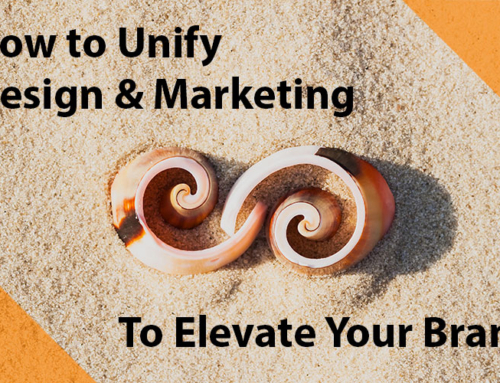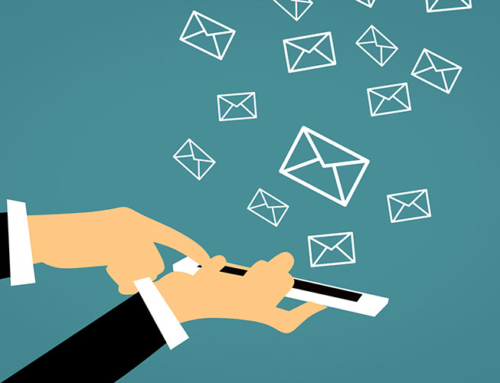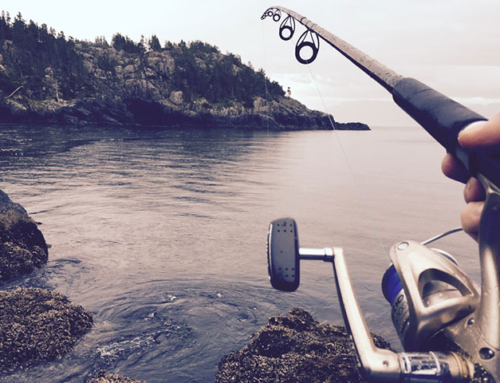As we find ourselves attending more and more virtual events, it feels like we’ve lost one of the main benefits of going to an event in the first place: networking with potential clients and colleagues. Unlike in-person events, Zoom meetings make it hard to initiate impromptu one-on-one conversations. Attendee contact lists? Probably off-limits. Business cards? Useless.
So, how do you get networking value out of virtual events?
Let’s approach this like you would a marketing strategy for a business. Only this time, the brand is you. Like a business, you’re going to:
- Demonstrate expertise and generosity by adding value to conversations
- Align your networking objectives with your needs and goals
- Make it easy for people to find you
Read on to see 14 different tactics for virtual networking before, during, and after events.
Start With Your Goals
 One way to develop a marketing strategy is to look at the goals of a business, and then build out marketing-related objectives and tactics to achieve them. Same goes for your networking ambitions—you can easily apply the goals-objectives-tactics framework to create a virtual networking strategy. This will help you focus your time and efforts where they’ll truly make a difference.
One way to develop a marketing strategy is to look at the goals of a business, and then build out marketing-related objectives and tactics to achieve them. Same goes for your networking ambitions—you can easily apply the goals-objectives-tactics framework to create a virtual networking strategy. This will help you focus your time and efforts where they’ll truly make a difference.
Start here:
- Frame 3-5 goals that would move the needle for your career or business. Are you looking for a new job? Do you need a good coder? Do you just need more clients?
- Identify the resources or outcomes that support your goals. Do you need a larger referral network, more exposure for your services, more vendors and collaborators, etc.?
- Create a list of the kinds of people who can help you, including roles they might have or industries they might work in. These are the people you’ll aim to meet through networking.
For example, let’s say you’re a productivity coach and you’re looking to grow your client base. You could lay out goals-objectives-tactics like this:
Goal of networking: To engage with potential clients or people who can refer you to clients.
Objective for event: Gain at least 5 new connections that fit your target profile(s).
Tactics for event: Use some ideas from the next few sections…
Networking Before the Event
You may have a few different options here, depending on whether you’re a presenter or attendee and how much virtual networking functionality the organizers have built into the event. Either way, social media is usually your best bet.

- Join any pre-event communication channels set up by the organizer.
-
- Introduce yourself, and include all your social media contact info (remember, we’re making it easy for people to find you).
- Start a conversation that lets other people talk about themselves: ask a question, ask for help, etc. Treat this like a cocktail party, and remember that the best conversationalists are listeners.
- Scan for questions from other attendees, and see if you can offer any relevant links or resources. This is a great way to demonstrate some helpful expertise.
- Publicize your attendance across social media channels, to attract peers and prospects who may also be participating.
-
- Offer a little perspective. Why is this event worth attending? What do you hope to learn?
- Use event hashtags to join ongoing conversations and get the attention of event organizers.
Both of the tactics above should help get your post liked and shared by others, which is great for increasing your overall exposure.
- If you can get a list of attendees and/or their contact info ahead of time:
Presenters: Connect with attendees before the event, to build rapport and make people feel involved early on.
-
- Via email or LinkedIn messages: thank attendees for signing up, and ask them for questions or needs related to your topic.
- Ask people to submit examples that you can incorporate into the presentation (anonymously or with attribution).
Presenters & Attendees: Scan the list to identify potentially worthwhile connections, assuming you have information about their company and/or roles. This might include:
-
- People who have expertise that would be valuable to you
- People who may need your expertise
- People who are, or who work for, potential clients
I wouldn’t necessarily recommend directly contacting these people before the event, as it might feel a little stalker-ish. What I would do is make a list of the folks you want to know more about, and look for them during the event. If you see an opportunity to connect when you’re all online, you might try one of the next possible tactics…
Networking During the Event
If the event organizers haven’t specifically created virtual networking opportunities for attendees, you’re a bit limited in what you can do during the event (again, without looking like a stalker). Keeping in mind our goals of adding value to the conversation and making yourself easy to find, you can try these tactics:
- Introduce yourself in the chat pod and include your social media contact info.
- During a presentation, listen for opportunities to add value: do you have e-books, blogs or other resources that would be helpful to other attendees? Post them in the chat pod.
- If people pose questions that you can address, private-chat them some helpful resources. If you’re feeling brave (and you’ve established a rapport), you might ask for their email address, and offer to send the resources later.
- Post notes and commentary on social media, using the event hashtags. If the organizers or other attendees are paying attention, they might like, share, or respond to your content.
Presenters: Try holding a contest! This can be a good way to gather email addresses and respond personally to participants. Ask a question that’s somehow relevant to your topic or recaps something you talked about in the presentation. To win your prize, people have to email you the answer, and the nth person to send you the correct answer wins. (Don’t make it the first person, otherwise most people will assume they’ve already missed their chance.)
Networking After the Event
This is when you’re likely to get the most traction, because you now have something in common with other attendees (you’ve all been to the same event). And, hopefully, you were able to directly connect with a few other people during the event.

- Find other attendees on LinkedIn and send connection requests. Particularly the people who match your target profile(s) or peaked your interest. You can also use LinkedIn to find their other social media handles—following someone shows that you want to hear what they have to say.
One observation: I’ve had people send me connection requests after events, but they don’t include a personal message or any kind of follow-up action. Me, I’d include a personal note that says why you’re connecting with them (i.e. “Hey, it looks like you do really interesting work with ____” or “I loved your comment about ____ during the event”). It’s more memorable and establishes an authentic connection.
Also, whenever possible, include a link to a useful and relevant resource. It shows you were paying attention and that you’re genuinely trying to be helpful.
- Search social media platforms for mentions of the event or its hashtags. Then you can:
-
- Join conversations about the event by adding your thoughts and feedback.
- Post content that’s relevant to the conversation. Bonus if it’s your original content.
- If you traded email addresses with other attendees, send a follow-up email with a helpful link or resource, an article they might find interesting, etc. Send something of value, with no hint of a sales pitch. I mean it. And if it’s appropriate, offer to meet for a virtual or in-person coffee.
Pro tip: If you do meet up, use the time to learn as much as you can about what the other person does. Delve into the problems they’re facing that are relevant to your area of expertise, and listen for ways that you can offer solutions. Maybe you recently helped a client with a similar problem, and you’d be happy to share some insights…in a follow-up email or meeting.
Presenters: If you have access to the attendee list, email a thank you to everyone who took the time to attend. You can also follow up with select attendees (the people who fit your target profile) by sending additional resources or invitations to continue the conversation.
Now Get Out There & Kill It
If you do nothing else in this list of suggestions, do this: find fellow attendees on social media after the event, send them personalized connection requests, and/or follow them on social media. It’s a friendly, professional way to establish the bare minimum of a link with a potentially valuable contact. Plus, you’re showing a genuine interest in connecting with another human being.
Above all, remember our big three for virtual networking:
- Create a networking strategy based on your goals
- Add real value to conversations
- Make it easy for people to find you
You got this!







Leave A Comment